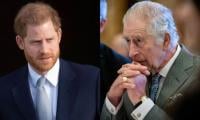The first transatlantic flight 100 years ago!
PARIS: When two British pilots steered a biplane across the vast Atlantic 100 years ago, battling frozen sleet and thick fog for more than 16 hours, they were making aviation history.
With their harrowing 3,000-kilometre crossing, Captain John Alcock and navigator Lieutenant Arthur Whitten Brown completed the world’s first non-stop transatlantic flight. Here is a look back at their groundbreaking journey between Newfoundland in Canada and Ireland on June 14-15, 1919.
The North Atlantic had already been conquered by air when Alcock and Brown climbed into their modified World War I bomber on June 14 -- but never in one go. Just weeks earlier three US Navy Curtiss flying boats had set out from New York state to make the trip with stopovers in Newfoundland, the Azores, Portugal and England.
Only one completed the journey, covering 6,000 kilometres in three weeks. Britain’s Daily Mail newspaper had laid down the challenge for a non-stop crossing by offering 10,000 pounds for a single flight from North America to the British Isles in under three days.
Just weeks ahead of the Alcock-Brown bid, two other teams had made an attempt: the first plane ditched into the ocean and was rescued; the second crashed on takeoff. Alcock, aged 26, and Brown, 32, took off in the early afternoon from St John’s, one of the easternmost points of North America.
Their Vickers Vimy biplane was weighed down by 4,000 litres of fuel and only just able to clear the trees, lurching in gusts of wind. "Several times I held my breath, from fear that our undercarriage would hit a roof or a tree-top," Brown recalled in "Flying the Atlantic in Sixteen Hours" (1920). Once airborne, the Royal Air Force aviators turned eastwards for Ireland, heading into the night.
-
 Canadian PM Visits China After A Decade Of Diplomatic Strain: What Deals Are In Focus?
Canadian PM Visits China After A Decade Of Diplomatic Strain: What Deals Are In Focus? -
 New York Plans Limited Rollout Of Self-driving Taxis
New York Plans Limited Rollout Of Self-driving Taxis -
 Sarah Ferguson Faces Painful Choice Between Peace, Family Bond
Sarah Ferguson Faces Painful Choice Between Peace, Family Bond -
 Nvidia Clarifies ‘no Upfront Payment Needed For H200 Chips Production’
Nvidia Clarifies ‘no Upfront Payment Needed For H200 Chips Production’ -
 Africa First: Nigeria Set To Approve Landmark AI Rules For Digital Economy
Africa First: Nigeria Set To Approve Landmark AI Rules For Digital Economy -
 WhatsApp Tests Built-in Supervision Feature Long Missing From The App
WhatsApp Tests Built-in Supervision Feature Long Missing From The App -
 Iceberg A-23A Turns Blue As Scientists Warn Collapse Is Imminent
Iceberg A-23A Turns Blue As Scientists Warn Collapse Is Imminent -
 FIFA Selects Stats Perform For Betting Data And Live Streaming
FIFA Selects Stats Perform For Betting Data And Live Streaming -
 Is Jessica Simpson Really Joining 'The Bachelorette'?
Is Jessica Simpson Really Joining 'The Bachelorette'? -
 Brayden Point Injury Raises Concern After Early Exit For Tampa Bay Lightning
Brayden Point Injury Raises Concern After Early Exit For Tampa Bay Lightning -
 Meghan Trainor Addresses 'toxic Mom Group' Rumours Again
Meghan Trainor Addresses 'toxic Mom Group' Rumours Again -
 Mattel Autistic Barbie Doll Aims To Boost Representation And Inclusion
Mattel Autistic Barbie Doll Aims To Boost Representation And Inclusion -
 William Makes Calculated Move To Future-proof His Public Role Amid Harry Return
William Makes Calculated Move To Future-proof His Public Role Amid Harry Return -
 Elijah Wood Breaks Silence On Possible Return To New 'Lord Of The Rings' Film
Elijah Wood Breaks Silence On Possible Return To New 'Lord Of The Rings' Film -
 Aaron Rodgers Wife: What The NFL Quarterback Has Said About His Marriage
Aaron Rodgers Wife: What The NFL Quarterback Has Said About His Marriage -
 Buckingham Palace Shuts Down Claims It Can Step In On Harry’s Security
Buckingham Palace Shuts Down Claims It Can Step In On Harry’s Security



